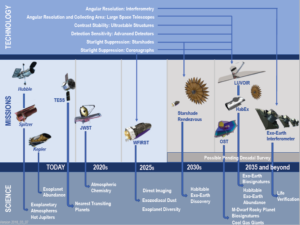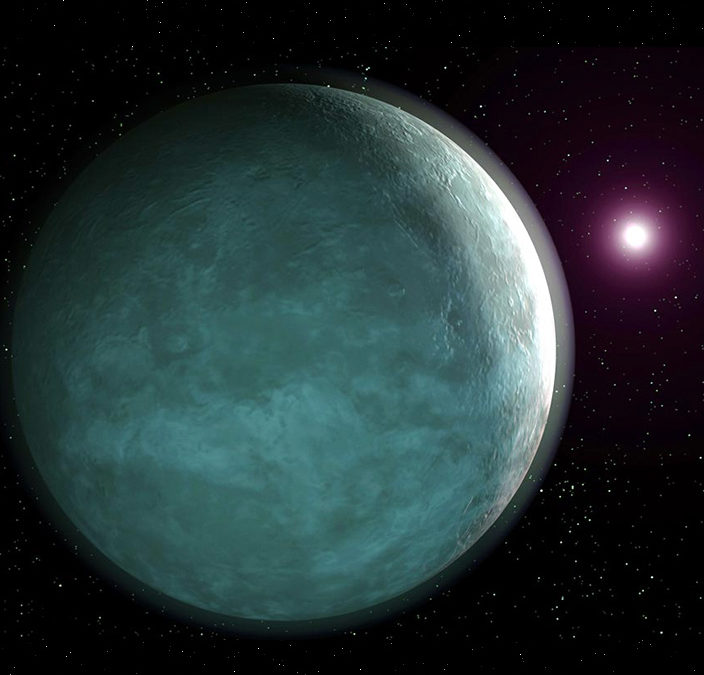Exoplanet Search
As we learned in Prometheus Blue, the Earth is doomed to the fate of a rogue star and as I have proven, there’s no way to stop it. Our only option is to get out of Dodge. We’ve got to accelerate the exoplanet search, find a new Earth and evacuate our poor planet well before the end comes in 2713.
As you can imagine, there are a few problems to overcome before our exoplanet search is successful in finding a new Earth among the stars. Here are some of the bigger ones:
Finding, Getting To and Living On a New Earth
- Where would we go? The ExoPlanet Search;
- Finding a Twin Earth – What’s the likelihood that we will find a suitable planet among all the candidates found so far?
- Drive Technology – Developing transport technology to get there, including fuel type;
- Testing and Simulation – How to best prove out our theories? Start with Mars;
- Sustainability – Carrying and manufacturing enough food, water, air and fuel for the journey. Surviving cosmic radiation;
- Ship Design – What is the best design for long term travel? How to survive micro-collisions?
- Funding – Who is going to pay for it?
- Getting Around – Traveling around the local system when we get there – the fuel, engine type we used for long distance travel may not be suitable for in-system maneuvering;
- What if we’re wrong? Confirming we have the right place (when we get there). Can we detect all critical factors from Earth?
- Establishing a Home. Building a sustainable life once we get there – grow food, build shelter, manufacturing, technology, 3D printing, etc.;
- Who Goes and How Many? Considering skills, age, health, propagation and the gene pool. Attrition during voyage and after we get there.
- Back home – Closer to impact date, implementation of birth controls, long term managed selection process.
This blog will explore all of these issues and more over the coming weeks and months.
Firstly, some ground rules. Earth is doomed. We have no choice. Finding a new Earth via the exoplanet search is critical to our propagation as a species. So this is not some little exploration effort for the sole benefit of pure science and space exploration. If we fail at this, humanity as a species will be wiped out. That would be bad.
All right. So we either have to build a lot of mammoth, billion-ton ships or a huge lot of extremely large, multi-million-ton ships.
Let’s start at the beginning.
Where would we go?
The ExoPlanet Search
NASA is already moving quickly on finding a new Earth – or at least a livable planet. It’s called the Exoplanet Search and it’s really quite advanced. It’s important enough that esteemed scientist Marissa Blake plans to devote the bulk of her time on the program.
Now you’d think that finding planets many light-years away would be difficult, and you’d be correct. These are incredible distances and the planets themselves are ridiculously difficult to find. Why? Here are a few reasons:
- they emit no light of their own;
- when their central star(s) light them up, their dark side is either facing us or their lit side is only partially visible;
- planet light is overwhelmed by the light of the star itself, which far out shines any tiny reflected body near it, by as much as a billion-fold.
So how are scientists and engineers going to go about finding a new Earth for us?
Methods for Finding Planets
NASA and others have developed four primary categories of planet-finding methods, all ingenious. There are variations of each of them, but these are the main groupings.
Bear in mind though, if Humanity is really going to be successful in finding a new Earth that we can actually get to and live on, we really have to look in our own neighborhood. Even the local galaxy is a stunning large. The distances involved are almost too great to fully fathom. I’ll explain that in a later blog.
Here’s a really useful graphic from NASA that puts it all together.

So here’s how our species is going about the task of finding a new Earth.
Radial Velocity – Watching for Wobble – 760 planets found so far. Orbiting planets cause stars to wobble in space, changing the color of light of the star that astronomers observe. This method takes advantage of the Doppler Effect which stretches out or compresses the star light when the planet orbits in line with Earth. Works on planets within 100 light-years or so. Platforms that use this method: Keck Hawaii, and La Silla in Chile.
Transit Photometry – Searching for shadows – 3,089 planets found so far. When the planet passes in front of the star, the star’s light dims by a measureable amount (a really small amount, perhaps one ten-thousandth!). The amount of dimming and the length of time the planet takes to transit the star’s diameter says a lot about the planet (e.g. its temperature, and its size and orbital period which can then be used to calculate its distance from the star). Also, when the planet passes in front of the star, many clues are derived as the starlight passes through its atmosphere. We compare the filtered and the non-filtered light and from that, we can deduce the composition and density of the planet’s atmosphere. The method only works on planets whose orbit passes directly between its central star and our observation platform. Platforms that use this method: NASA’s Kepler Mission and their Transiting ExoPlanet Survey Satellite (TESS). The Large Binocular Telescope Interferometer. The Hubble. The James Webb Space Telescope (6.5 m) (JWST) (2021). This is the platform Marissa Blake used to observe our star fragment loop around Barnard’s Star. See also the Super Wide Angle Search for Planets (WASP).
Direct Imaging – Taking pictures – 47 planets found so far. Astronomers can take pictures of planets by removing the intense glare of the central star that normally overwhelms the dimness of the planets circling it. Coronagraphs inside specially equipped telescopes to block out the star light, similar to how the moon blocks sunlight during a full solar eclipse. Then, the light is transferred to a special mirror that is distorted with hundreds of tiny pistons to block out the remaining glare and reveal the presence of the planets. Scientists and detect a planet with one-billionth of the brightness of the star in this way. Other methods, such as Star Shade, will be discussed in another blog post. Platforms that use this method: Palomar. Planned: European Extremely Large Telescope, Thirty Meter Telescope, Magellan Giant Telescope, the Very Large Telescope (clearly not as big as the Extremely Large Telescope) and NASA’s Wide Field Infrared Survey Telescope (WFIRST) (2025). The WFIRST is the telescope that Marissa relies so heavily on in the Prometheus books in her planetary search efforts.
Gravitational Microlensing – 77 planets found so far. According to Einstein’s General Relativity Theory, gravity causes the fabric of space-time to bend. Practically, this means that gravity can bend light. Detection occurs when a distant star passes directly behind another closer star (the “lensing star”). Due to Relativity, even though the stars are perfectly lined up, images of both can be seen, because the distant star’s light bends around the lensing star’s light to give us two separate images. If the more distant star has a planet, its light will periodically become visible in the same manner, briefly showing up as a dimmer companion to the distant star. Astronomers can’t predict where or when this will occur so they have to stare at the target sector in space for a long time. That’s why the platforms most used for this type of detection are Robotic Telescopes, including the 1.3 meter Kitt Peak telescope in Tucsan. It is also thought to be the best method for distant planets, thousands of light-years away.
For more detail and some terrific imaging and animation, check out NASA’s Exoplanet page. Also, for a really great index of all of NASA’s current and planned missions, take a look at NASA Missions.
Conclusion
By 2030, Dr. Marissa Blake reports from the exoplanet search HQ that the global effort in finding a new Earth has yielded about 50,000 possible candidates. So how are we going to figure out which one, if any, will be suitable to be a New Earth? There are so many factors to consider.
Next installment.
To read the first few pages from my debut Science Fiction Thriller - Prometheus Blue - please click here (opens new window). I hope it intrigues you enough to want more. I'll be seeking agent representation to publish Prometheus Blue soon. The sequel - Prometheus Red - (excerpt here) will follow hot on her heels. If you leave a positive Comment, it will help me get published!
Follow me
Seeking Agent Representation
Late Summer / Early Fall 2023, I will be embarking on my quest for agent representation for Making Diamonds -- My debut psychological crime thriller, set in present-day Manhattan. Soon after will I will release my debut near future thriller -- Prometheus Blue, the beginning of an 800-year series about the end of the world. Prometheus Red will emerge hot on Blue's heels.

Recent Comments